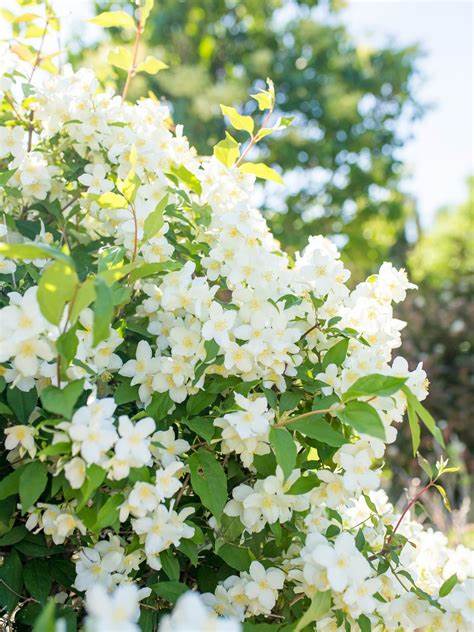Riverdene Garden Center
Blizzard Mockorange
Blizzard Mockorange
Couldn't load pickup availability
Philadelphus lewisii ‘Blizzard’
Blizzard Mockorange is a cold-hardy, deciduous flowering shrub known for its abundant clusters of fragrant white flowers in early summer. Developed in Canada, this exceptionally winter-hardy variety thrives in Zone 2-7, making it perfect for hedges, borders, and foundation plantings in Southwest Saskatchewan. With minimal care requirements, drought tolerance, and a strong citrus-like fragrance, it’s an excellent choice for adding beauty and scent to landscapes.
Planting & Location
- Hardiness Zone: 2-7 (one of the most winter-hardy mockoranges, ideal for prairie climates)
- Mature Size: 5-6 feet tall, 4-5 feet wide
- Growth Rate: Moderate (12-18 inches per year)
- Sunlight Needs: Full sun to partial shade (best flowering occurs with 6+ hours of direct sun)
-
Soil Preference:
- Prefers well-drained, loamy soil.
- Tolerates clay, sandy, and slightly alkaline soils.
- Avoid overly wet or waterlogged conditions, as it dislikes excessive moisture.
- Spacing: 4-5 feet apart for hedging, 6+ feet apart for individual shrubs.
Watering
- Young Plants (First Year): Water deeply 1-2 times per week to establish roots.
- Established Shrubs: Drought-tolerant but benefits from deep watering every 7-10 days in dry conditions.
- Avoid Overwatering: Prefers moderate soil moisture but does not tolerate standing water.
Fertilizing
- First Year: No fertilizer needed—focus on root establishment.
-
Mature Shrubs:
- Apply a balanced slow-release fertilizer (e.g., 10-10-10) in early spring to encourage strong flowering.
- Organic alternative: Compost or well-rotted manure in spring.
Pruning & Maintenance
- Best Time to Prune: Right after flowering (mid to late summer) to encourage new growth and blooms for the next season.
-
How to Prune:
- Remove dead, damaged, or weak branches to promote healthy growth.
- Trim lightly after flowering to maintain shape and encourage fresh blooms.
- Rejuvenate older plants by cutting back one-third of the oldest stems to ground level every 3-4 years.
Flowers, Foliage & Seasonal Interest
- Bloom Time: Late spring to early summer (June-July)
- Flower Color: Pure white, four-petaled blossoms with a strong citrus fragrance
- Fragrance: Intensely sweet, citrus-like scent
-
Foliage:
- Spring & Summer: Medium to dark green leaves
- Fall: Yellowish-green before dropping
Pest & Disease Management
Resistant to: Drought, deer, urban pollution, and most pests
Common Pests:
-
Aphids – Can cause curled leaves and sticky honeydew.
- Solution: Spray with insecticidal soap or introduce ladybugs.
-
Scale Insects – Appear as small bumps on stems and leaves.
- Solution: Use horticultural oil in early spring.
Common Diseases:
-
Leaf Spot (Fungal or Bacterial) – Causes brown spots on foliage.
- Solution: Improve airflow and avoid overhead watering.
-
Powdery Mildew – White fungal coating on leaves in humid conditions.
- Solution: Prune to improve airflow and apply fungicide if needed.
Winter Protection
- Extremely winter-hardy—no special protection needed in Zone 2-7.
- Mulching: Apply 2-4 inches of mulch around the base (not touching the stems) to insulate roots.
- Rodent & Deer Protection: Generally resistant to deer, but rabbits may nibble young stems in winter.
Landscape Uses
Great for specimen plantings, hedges, and foundation plantings
Produces intensely fragrant, showy white flowers
Low-maintenance and easy to grow
Attracts pollinators such as bees and butterflies
Works well in cottage gardens, mixed borders, and urban landscapes
Additional Notes:
- Blizzard Mockorange is one of the best flowering shrubs for cold climates, offering lush white blooms, a strong fragrance, and easy-care maintenance.
- Lifespan: 20+ years with proper care.
- Works well in traditional, cottage-style, or prairie gardens.
Photo courtesy of Jeffries Nursery
Share


